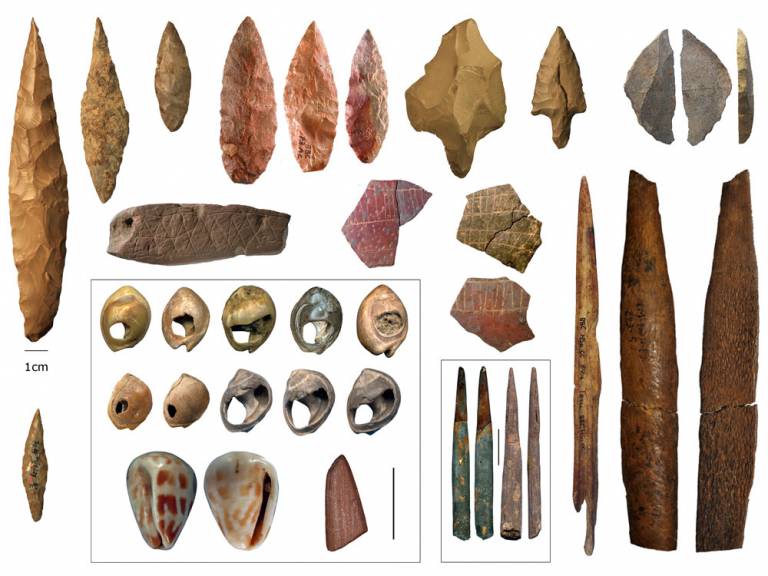Our fractured African roots
11 July 2018
Our African ancestors were diverse in form and culture, and scattered across the entire continent, finds a team led by UCL, the University of Oxford and the Max Planck Institute for the Science of Human History.

These findings challenge the idea that humans, or Homo sapiens, stemmed from a single, large ancestral population in one region of Africa which randomly exchanged genes and technologies like stone tools.
The research, published today in Trends in Ecology and Evolution, argues that human ancestors did evolve in Africa but were scattered across continent, largely kept apart by a combination of diverse habitats and shifting environmental boundaries, such as forests and deserts.
By studying bones (anthropology), stone tools (archaeology) and genes (population genomics), alongside new and detailed reconstructions of Africa's climates and habitats over the last 300,000 years, the team investigated how humans evolved within the continent.
Their findings suggest that millennia of separation gave rise to a staggering diversity of human forms, whose mixing ultimately shaped our species.
"Stone tools and other artefacts - usually referred to as material culture - have remarkably clustered distributions in space and through time," said Dr Eleanor Scerri, researcher at the University of Oxford and the Max Planck Institute for the Science of Human History, and lead author of the study.
"While there is a continental-wide trend towards more sophisticated material culture, this 'modernization' clearly doesn't originate in one region or occur at one time period."
The genetic part of the study agreed with these findings. "It is difficult to reconcile the genetic patterns we see in living Africans, and in the DNA extracted from the bones of Africans who lived over the last 10,000 years, with there being one ancestral human population," said Professor Mark Thomas, evolutionary geneticist at UCL and co-author on the study.
"We see indications of reduced connectivity very deep in the past, some very old genetic lineages, and levels of overall diversity that a single population would struggle to maintain."
The same is true of the human fossils record. "When we look at the morphology of human bones over the last 300,000 years, we see a complex mix of archaic and modern features in different places and at different times," said Professor Chris Stringer, researcher at the London Natural History Museum and co-author on the study.
"As with the material culture, we do see a continental-wide trend towards the modern human form, but different modern features appear in different places at different times, and some archaic features are present until remarkably recently."
To understand why human populations were so subdivided, and how these divisions changed through time, the researchers looked at the past climates and environments of Africa, which give a picture of shifting and often isolated habitable zones.
Many of the most inhospitable regions in Africa today, such as the Sahara, were once wet and green, with interwoven networks of lakes and rivers, and abundant wildlife. Similarly, some tropical regions that are humid and green today were once arid.
The shifting nature of these habitable zones means that human populations would have gone through many cycles of isolation - leading to local adaptation and the development of unique material culture and biological makeup - followed by genetic and cultural mixing.
"The evolution of human populations in Africa was multi-regional. Our ancestry was multi-ethnic. And the evolution of our material culture was, well, multi-cultural," said Dr Scerri. "We need to look at all regions of Africa to understand human evolution."
UCL's contribution to this research was kindly funded by a Wellcome Trust Senior Investigator Award Grant.
Links
- Research published in Trends in Ecology and Evolution
- Professor Mark Thomas's academic profile
- UCL Genetics, Evolution & Environment
Images
- Middle Stoneage cultural artefacts (credit: Dr Eleanor Scerri)
Media contact
Bex Caygill
Tel: +44 (0)20 3108 3846
Email: r.caygill [at] ucl.ac.uk
 Close
Close

